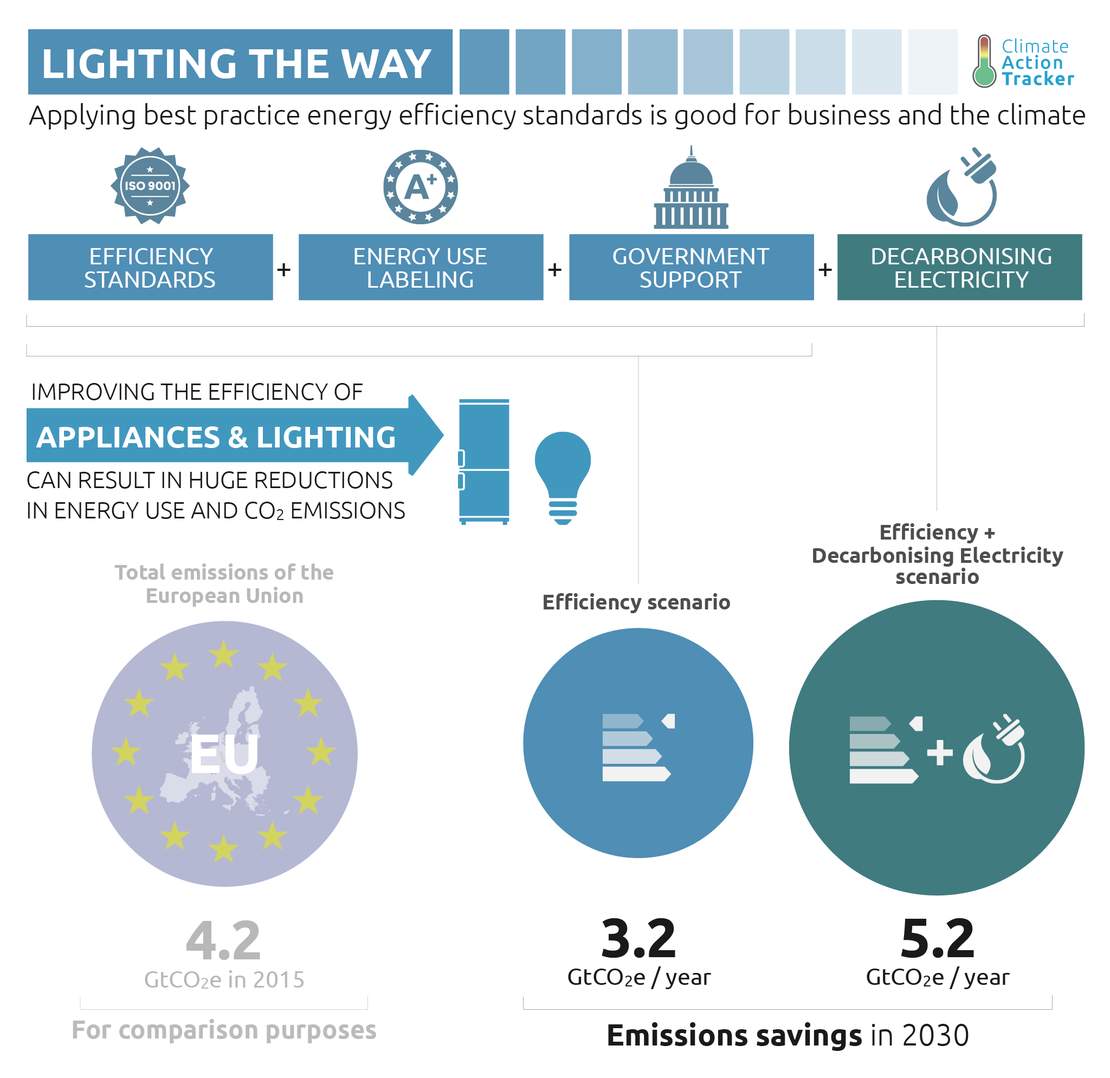A policy spotlight on energy efficiency in appliances and lights could see big climate gains: analysis
Attachments
Summary
As people around the world switch off their lights for “Earth Hour” this weekend, a new analysis shows the world could make huge reductions in global warming by simply adopting the highest existing energy related standards for lighting and appliances. This can be achieved at net zero costs for consumers and with substantial co-benefits to health.
The Climate Action Tracker, as part of its decarbonisation series, today released its analysis on the emissions reduction potential for lighting and appliances in buildings. If the highest existing minimum energy performance and labelling standards were applied globally, they could save around 4,500 TWh in 2030, the equivalent of closing 1,140 average coal-fired power plants (600 MW).

Coupled with low carbon electricity, applying these standards globally could reduce annual emissions by 5.2 GtCO2 in 2030 (-60%) compared with business-as-usual—more than the current annual emissions of the entire European Union.
“More efficient appliances and lights use less electricity and therefore help the power sector to phase out emissions from fossil fuels, a crucial enabling factor towards achieving the 1.5°C warming limit,” said Dr Ursula Fuentes of Climate Analytics.
The analysis looks at case studies such as in India where a programme to address the financial barrier of higher LED costs has sold more than 230 million LED bulbs to Indian households since 2014 (the demand has increased by 50 times). This resulted in electricity savings of more than 30 TWh annually and an avoided peak demand of 6,000 MW.
“What we found amounts to an obvious business case, with tremendous opportunities for both manufacturers and customers,” said Yvonne Deng of Ecofys, a Navigant company.
In France, lighting installations of non-residential buildings must be switched off at night, to reduce both energy waste and light pollution. The resulting energy savings are comparable to the annual electricity consumption of 750,000 households, will lower CO2 emissions by 250 kt and save French businesses EUR 200 million in energy costs.
“We found examples around the world where people are reaping the benefits by switching off lights in cities at night, switching to LEDs, smart lighting and smart metering, apps provided by energy companies to encourage customers to save energy or to use appliances at off-peak hours” said Prof Niklas Höhne of NewClimate Institute.
Over one billion people have no access to electricity, and one in three still use kerosene for lighting, which has major health impacts. For these people, off-grid solar lighting or microgrid renewable energy solutions with efficient lighting continue to offer tremendous opportunities in avoiding greenhouse gas emissions while stimulating social and economic development.
“Lighting and appliance efficiency improvements, together with renewable energy, are key to simultaneously meeting the sustainable development goal of providing access to affordable and clean energy for all and the Paris Agreement 1.5°C limit”, said Jasmin Cantzler of Climate Analytics.
Decarbonisation memo series

This memo is a part of the CAT decarbonisation memo series that seeks to address the question: How can different sectors achieve the rapid transformations and emissions reductions required to meet the long-term temperature goals of the Paris Agreement? Click on the link below to read more about the series or click on the icons to see the analysis for each sector.
Stay informed
Subscribe to our newsletter